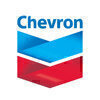Project Control Engineer
30+ Project Control Engineer Interview Questions and Answers

Asked in Burns & McDonnell

Q. What are the 14 points of the DCMA (Defense Contract Management Agency)?
The 14 points of the DCMA are guidelines for effective project management in defense contracts.
Establish clear project objectives and requirements
Develop a realistic project schedule
Assign responsibilities and authorities clearly
Ensure adequate resources are available
Maintain open communication with stakeholders
Identify and manage project risks
Monitor and control project performance
Implement corrective actions when necessary
Ensure compliance with regulations and standards
Docu...read more

Asked in Burns & McDonnell

Q. What are the various formulas used to calculate the Budget at Completion (BAC)?
Formulas used to calculate Budget at Completion (BAC) in project control engineering.
BAC = Planned Value (PV) at completion
BAC = Actual Cost (AC) + Estimate to Complete (ETC)
BAC = Budgeted Cost of Work Scheduled (BCWS) + Budgeted Cost of Work Remaining (BCWR)
Project Control Engineer Interview Questions and Answers for Freshers

Asked in ExxonMobil

Q. What deliverables are expected after the 30% Model Review, and after the 60% Model Review, for all disciplines?
Deliverables for 30% and 60% Model Reviews include design documents, reports, and updated models across all disciplines.
30% Model Review Deliverables: Preliminary design documents, initial cost estimates, and risk assessments.
60% Model Review Deliverables: Detailed design documents, updated cost estimates, and construction schedules.
Disciplines involved: Civil, Structural, Mechanical, Electrical, and Instrumentation.
Example for Civil: Site layout plans and grading designs at ...read more

Asked in ExxonMobil

Q. What is the difference between a Construction project schedule and a System completion schedule?
Construction project schedules focus on tasks and timelines, while system completion schedules emphasize overall project readiness and functionality.
Construction project schedules detail specific tasks, durations, and resources needed for physical construction.
System completion schedules outline the integration of systems and ensure all components function together before project handover.
For example, a construction schedule may include pouring concrete, while a system comple...read more

Asked in ExxonMobil

Q. Can you describe the installation sequence of a new centrifugal compressor in a working plant?
The installation of a new centrifugal compressor involves careful planning, preparation, and execution to ensure optimal performance.
1. Site Preparation: Ensure the installation area is clean and accessible, with necessary tools and equipment ready.
2. Equipment Inspection: Check the compressor and associated components for any damage or defects before installation.
3. Foundation Installation: Prepare and install a solid foundation to support the compressor, ensuring it meets s...read more

Asked in ExxonMobil

Q. The SPI of your project is greater than 1, but the actual progress is not moving. What could be the reason?
An SPI greater than 1 indicates efficiency, but stagnant actual progress may stem from various underlying issues.
1. Overestimation of progress: The project may have been inaccurately assessed, leading to inflated SPI.
2. Resource constraints: Limited resources or manpower can hinder actual progress despite efficient planning.
3. Delayed deliverables: Dependencies on external vendors or suppliers can stall progress, affecting actual completion.
4. Scope changes: Unplanned changes...read more
Project Control Engineer Jobs




Asked in ExxonMobil

Q. Can you explain the difference between Earned Value and Actual Value?
Earned Value measures work completed, while Actual Value reflects the actual costs incurred for that work.
Earned Value (EV) is the value of work actually performed up to a specific point in time.
Actual Value (AV), also known as Actual Cost (AC), is the total cost incurred for the work completed.
For example, if a project budget is $100,000 and 50% of the work is completed, EV would be $50,000.
If the actual costs incurred for that 50% of work is $60,000, then AV would be $60,00...read more

Asked in ExxonMobil

Q. Can you explain the different types of contracts in the EPC Industry?
EPC contracts define the terms for engineering, procurement, and construction projects, impacting risk and payment structures.
Lump Sum Contract: Fixed price for the entire project, e.g., a power plant construction.
Cost Plus Contract: Contractor reimbursed for costs plus a fee, e.g., complex infrastructure projects.
Unit Price Contract: Payment based on units of work completed, e.g., road construction per mile.
Time and Materials Contract: Payment based on time spent and materia...read more
Share interview questions and help millions of jobseekers 🌟


Asked in ExxonMobil

Q. What are the 5 heading columns in an Excel sheet used for Cost Control on a project?
Key columns in a project cost control Excel sheet help track and manage project expenses effectively.
1. Cost Item: Describes the specific expense, e.g., 'Labor', 'Materials'.
2. Budgeted Amount: The planned cost for each item, e.g., '$10,000' for materials.
3. Actual Cost: The real expenditure incurred, e.g., '$8,500' for materials.
4. Variance: The difference between budgeted and actual costs, e.g., '$1,500' under budget.
5. Status: Indicates if the cost is on track, over budget...read more

Asked in ExxonMobil

Q. What is your understanding when CPI is greater than 1 but SPI is 0 in a project?
CPI > 1 indicates cost efficiency, while SPI = 0 shows no progress; a project may be under budget but not advancing.
CPI (Cost Performance Index) > 1 means the project is spending less than planned for the work completed.
SPI (Schedule Performance Index) = 0 indicates that no work has been completed against the planned schedule.
This scenario can occur if a project is in a phase where costs are incurred without corresponding progress, such as planning or design.
For example, if a...read more

Asked in ExxonMobil

Q. When do you consider FEED completed for a large brownfield or greenfield project?
FEED is completed when all design, cost, and schedule elements are finalized and approved for project execution.
All design documents, including P&IDs and layout drawings, are finalized and approved.
Cost estimates are developed and validated, ensuring alignment with budget expectations.
Schedule milestones are established, detailing key deliverables and timelines.
Stakeholder reviews and approvals are obtained, confirming alignment with project objectives.
Risk assessments are co...read more

Asked in ExxonMobil

Q. Can you explain the logic you use to measure engineering and procurement activity in a PMS sheet?
Measuring engineering and procurement activities in a PMS sheet involves tracking progress, costs, and timelines against project milestones.
Define key performance indicators (KPIs) for engineering and procurement activities, such as schedule adherence and cost variance.
Use a Gantt chart to visualize timelines for engineering deliverables and procurement milestones.
Track the percentage of completion for each engineering task and procurement order against the planned schedule.
I...read more

Asked in ExxonMobil

Q. 1) Productivity of any Equipment? 2) Types of contracts? 3) Earned value Management 4) Cost reporting / Reporting dashboard 5) How to calculate duration of any task?
Productivity of equipment can be measured by factors like utilization rate, downtime, and efficiency.
Productivity of equipment can be measured by factors such as utilization rate, downtime, and efficiency.
Utilization rate is calculated by dividing actual working hours by total available hours.
Downtime refers to the time when equipment is not operational, impacting productivity.
Efficiency is determined by comparing actual output to expected output.
Examples of equipment product...read more

Asked in Accenture

Q. What are the different types of relationships?
Different types of relationships include familial, romantic, professional, and platonic relationships.
Familial relationships: relationships between family members such as parents, siblings, and children.
Romantic relationships: intimate relationships between partners or spouses.
Professional relationships: relationships between colleagues or business partners.
Platonic relationships: non-romantic relationships based on friendship and mutual respect.

Asked in Burns & McDonnell

Q. What are the steps to create a look-ahead report?
Steps to create a look-ahead report
Identify the project milestones and deadlines
Review the project schedule and identify upcoming tasks
Analyze potential risks and delays
Update the look-ahead report with current progress and forecasted completion dates
Communicate the report to stakeholders for awareness and decision-making

Asked in Allen Solly

Q. What are the key performance indicators?
Key performance indicators are measurable values that demonstrate how effectively a company is achieving key business objectives.
KPIs are specific, quantifiable metrics used to track progress towards organizational goals.
They help in evaluating the success of a project or business by measuring performance in key areas.
Examples of KPIs for a Project Control Engineer may include project completion time, budget variance, and quality control metrics.

Asked in Sendan International Co

Q. What are the basics of Primavera?
Primavera is a project management software used for planning, scheduling, and controlling projects.
Primavera is commonly used in industries such as construction, engineering, and manufacturing.
It allows users to create project schedules, allocate resources, track progress, and analyze project performance.
Users can generate reports, monitor costs, and manage risks within the software.
Primavera offers features like Gantt charts, critical path method, and resource leveling.
It he...read more

Asked in ExxonMobil

Q. What is the procurement weightage for each step in an EPC project?
Procurement weightage in EPC projects varies by phase, impacting cost, schedule, and quality management.
1. Planning Phase: 10-15% - Initial procurement strategy and vendor selection.
2. Design Phase: 20-25% - Detailed specifications and procurement of long-lead items.
3. Execution Phase: 40-50% - Bulk procurement and logistics management.
4. Commissioning Phase: 10-15% - Final procurement adjustments and spare parts.
5. Closeout Phase: 5-10% - Final payments and contract closure.

Asked in Siemens Logistics

Q. How do you assign progress after a change in scope?
Progress is assigned after change in scope by evaluating the impact on project objectives and adjusting the schedule, resources, and budget accordingly.
Evaluate the impact of the change in scope on project objectives, schedule, resources, and budget
Adjust the project schedule to accommodate the change in scope
Allocate additional resources or redistribute existing resources to address the change
Reassess the budget and make necessary adjustments
Communicate the changes to stakeh...read more

Asked in Burns & McDonnell

Q. What is earned value management?
Earned value management is a project management technique for measuring project performance and progress.
Compares actual work completed and costs incurred to planned work and costs
Helps in forecasting project outcomes based on current performance
Key metrics include Planned Value (PV), Earned Value (EV), and Actual Cost (AC)
Formula: EV = % of work completed * Total budget
Example: If a project is 50% complete and the total budget is $100,000, EV = 50% * $100,000 = $50,000

Asked in Burns & McDonnell

Q. How can you create a schedule?
A schedule can be created by identifying project tasks, estimating durations, sequencing tasks, assigning resources, and setting milestones.
Identify all project tasks and break them down into smaller, manageable activities.
Estimate the duration of each task based on historical data or expert judgment.
Sequence the tasks in the order they need to be completed, considering dependencies between tasks.
Assign resources to each task, taking into account availability and skill level....read more

Asked in Bastian Solutions

Q. How does a control system work?
Controls system is a set of processes and tools used to manage project scope, schedule, cost, and quality.
Controls system involves planning, monitoring, and controlling project activities
It includes tools such as scheduling software, cost estimating software, and risk management software
Controls system helps to identify potential problems and take corrective actions to keep the project on track
It also involves communication and collaboration among project team members and sta...read more

Asked in Bastian Solutions

Q. What is PLC and its Types.
PLC stands for Programmable Logic Controller. It is an industrial computer used to control manufacturing processes.
PLCs are used in various industries such as automotive, food and beverage, and pharmaceuticals.
There are different types of PLCs such as modular, compact, and rack-mounted.
PLCs are programmed using ladder logic, function block diagrams, or structured text.
They are designed to withstand harsh industrial environments and can operate in extreme temperatures.
PLCs can...read more

Asked in Bastian Solutions

Q. What is VFD? How it works?
VFD stands for Variable Frequency Drive. It is an electronic device that controls the speed of an AC motor.
VFD is used to control the speed of AC motors in various applications such as HVAC systems, pumps, and conveyors.
It works by converting the incoming AC power to DC and then back to AC at a variable frequency and voltage.
The frequency and voltage of the output AC power can be adjusted to control the speed of the motor.
VFDs can improve energy efficiency and reduce wear and...read more

Asked in Burns & McDonnell

Q. What is a look-ahead report?
A look-ahead report is a document that outlines upcoming tasks, potential issues, and solutions for a project.
Provides a snapshot of upcoming project activities
Highlights potential roadblocks and proposed solutions
Helps project team anticipate and plan for future challenges
Usually covers a short-term period, such as the next week or month

Asked in AtkinsRealis

Q. What is TCPI?
TCPI stands for To Complete Performance Index, a measure of the cost performance required to achieve a specific management goal.
TCPI is calculated as the ratio of the remaining work to be done to the remaining budget available.
It helps project managers assess the efficiency needed to complete a project within budget.
TCPI values greater than 1 indicate that more efficiency is needed to stay within budget, while values less than 1 indicate that the project is on track to meet b...read more

Asked in AtkinsRealis

Q. What is EVM?
EVM stands for Earned Value Management, a project management technique to measure project performance and progress.
EVM compares the planned work with the actual work completed to determine if a project is on track.
Key EVM metrics include Planned Value (PV), Earned Value (EV), and Actual Cost (AC).
EVM helps in forecasting project outcomes and identifying potential risks.
Formula: EV = % of work completed * BAC (Budget at Completion)
Example: If a project is 50% complete and the ...read more

Asked in Bastian Solutions

Q. Explain how a motor works.
A motor converts electrical energy into mechanical energy to produce motion.
Motors work on the principle of electromagnetic induction.
They consist of a rotor and a stator.
The stator contains the stationary windings and the rotor contains the rotating windings.
When an electrical current is passed through the windings, a magnetic field is created which causes the rotor to rotate.
Different types of motors include AC motors, DC motors, stepper motors, and servo motors.

Asked in Bastian Solutions

Q. Sensors and its Types
Sensors are devices that detect and respond to physical stimuli and convert them into electrical signals.
There are various types of sensors such as temperature sensors, pressure sensors, proximity sensors, etc.
Sensors can be classified based on their working principle such as resistive, capacitive, inductive, etc.
Sensors can also be classified based on their application such as automotive sensors, medical sensors, etc.
Sensors are used in various industries such as manufacturi...read more

Asked in Accenture

Q. What is WBS?
WBS stands for Work Breakdown Structure, a hierarchical decomposition of the total scope of work to be carried out by the project team.
WBS breaks down the project deliverables into smaller, more manageable components.
It helps in organizing and defining the total scope of the project.
Each level of the WBS represents a different level of detail.
It is a visual representation of the project scope.
Example: In a construction project, the WBS may include categories like foundation, ...read more
Interview Questions of Similar Designations
Interview Experiences of Popular Companies






Calculate your in-hand salary
Confused about how your in-hand salary is calculated? Enter your annual salary (CTC) and get your in-hand salary


Reviews
Interviews
Salaries
Users










